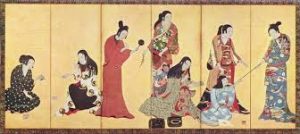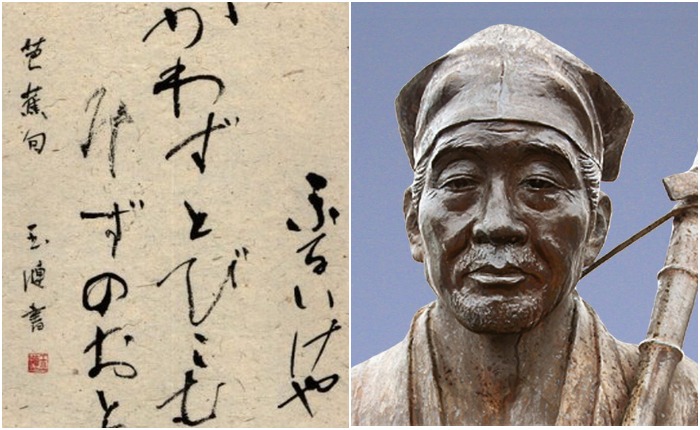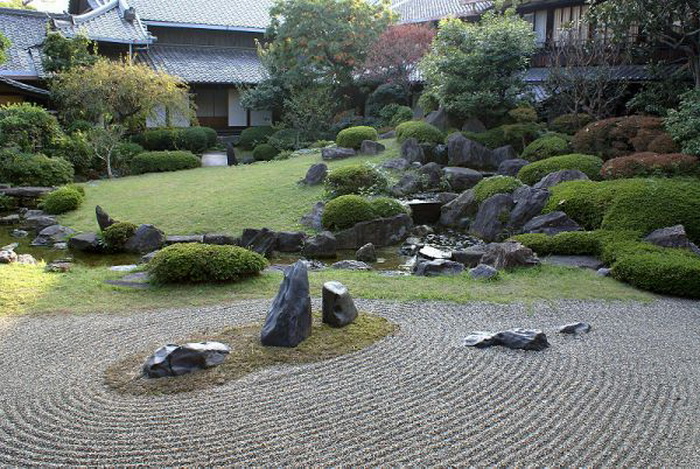CLOTHES IN TRADITIONAL JAPANESE ARTS
 In today’s world, traditional clothing naturally gives way to a European dress. Kimono is also subject to change. Now it is made using modern dyeing and weaving technologies. Its decoration changes according to demand. The national costume, along with other cultural phenomena, has become a platform for experiments in attempts to find new opportunities for its development and transformation today. But despite any social and cultural changes, the world of traditional arts in Japan remains almost unchanged, which makes this country unique in the eyes of the whole world.
In today’s world, traditional clothing naturally gives way to a European dress. Kimono is also subject to change. Now it is made using modern dyeing and weaving technologies. Its decoration changes according to demand. The national costume, along with other cultural phenomena, has become a platform for experiments in attempts to find new opportunities for its development and transformation today. But despite any social and cultural changes, the world of traditional arts in Japan remains almost unchanged, which makes this country unique in the eyes of the whole world.
Japanese traditional arts contain the suffix DO, which means Path. This way of improving oneself through the knowledge of a certain skill becomes a lifestyle, therefore everything is important in it: skills, knowledge, thoughts, speech, behavior, clothes. Only by educating oneself from all sides can one comprehend the Way. Therefore, until now, in all traditional arts, costume is an integral part of the process of comprehension of each of the arts, whether it is a tea ceremony, dance, etc. Here, kimonos are preserved in order to preserve the art itself. A certain vicious circle was created: when, for example, a tea ceremony was born, people wore a kimono, therefore, in order to understand how people felt in the old days, when they performed tea, it is absolutely necessary to wear an old costume.
Theatrical art is perhaps most closely associated with the costume, because actors need to transform into their characters on stage, and the costume helps them in this. Since ancient times, the Japanese believed that clothing can change the essence of man. A neat appearance was an indicator of the harmony of the soul and benefactor. In ‘The Story of Old Man Taketori’, in order to return to the Moon, Kaguya-hime had to wear moon clothes, otherwise she would not turn into a lunar resident again. In the play ‘Hagoromo’, the fairy also could not fly to heaven without her cape, which she lost in the forest. When you need to show the hidden essence of the hero, for example, his transformation into a demon, use the прием hikinuki ’technique – a quick change of clothes, which is carried out directly on the stage in front of the audience.
Since the actors use very sophisticated costumes on stage, it is quite natural that they spend their workouts, rehearsals and most of their normal lives in traditional clothes. It gives a completely different sensation of the body than European clothes, changing breathing, movement, gait. Thus, the physical and mental state necessary for a traditional dance is born.
Representatives of the colloquial humorous genre of ‘rakugo’, people involved in traditional dances ‘nihon bui’, playing traditional instruments (koto, shamisen, biwa, etc.), geiko and maiko, many masters of traditional crafts wear kimonos both on stage and and in everyday life, in order to maintain an internal connection with the centuries-old traditions of each of the arts.
In Kado (ikebana), masters and students also consider kimono to be the preferred clothing class. Seasonality, which is an integral criterion when choosing clothes, allows you to feel the unity with nature and inner harmony. Color and ornament evoke certain emotions in a person, and then they are embodied in a floral arrangement. The kimono should not be brighter than the colors used in the arrangement.
Most restrictions and rules are set for clothing for the tea ceremony. In addition to matching the kimono with the season, mood, environment and tea utensils, it should reflect respect for the owner, guests and other participants in the tea event. Compliance with the rules of etiquette is extremely important when conducting official tea receptions ‘chaji’. At the ooyose tea ceremony (an informal, ordinary tea reception) one can already feel more free to choose clothes, but the kimono should not be too memorable so that there is no impression of “ah, again this is a kimono” and does not distract from the tea process itself action. At the ‘Hatsukama’ ceremony, organized on the occasion of the new year, you can wear more festive, more decorated kimonos than usual. Even bright furisodes are allowed in this case. However, the masters recommend that you do not tie too bulky bows.
The ерб mon ’coat of arms must be present for the tea ceremony kimono. It can be the coat of arms of the family (kamon), the school of the tea ceremony or a symbolic sign (kazari-mon). The coat of arms is the first and most important sign of respect for everyone present at the tea action. He, like a business card, tells the interlocutor the name of his counterpart. The absence of a coat of arms shows that a person remains incognito, and they do not trust others, not wanting to identify themselves.
Both men and women usually wear one-coat kimonos. In coordination with all participants of the ceremony, you can wear a kimono with three emblems. Clothing with three emblems is most often used for ‘chiji’ and ‘hatsu kama’. For ‘ooyose’, in agreement with the owner and other guests, you can wear a kimono without a coat of arms.



